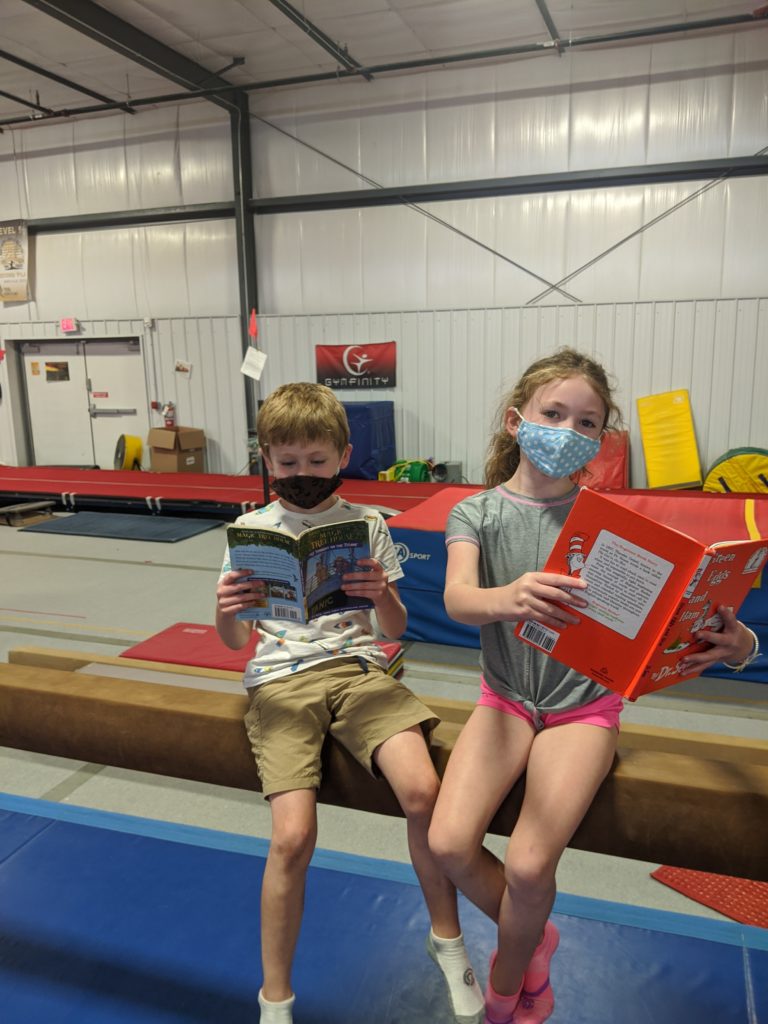Keeping Kids Healthy and Bright
A few posts ago I was ruminating over the benefits of Gymnastics for kids. I spun into a bit about brain development. After a few comments from friends I decided to add on to that post and finish out the thought.
Today we are pretty comfortable knowing that a child’s success is based off of good health and education. That seems like something we could all agree on, right? Right. Yet we see disturbing trends in child obesity still on the up-swing. This is particularly disturbing because obesity and lethargy go hand in hand and as research has shown, physical activity and academic achievement also go hand in hand but are opposite of the first pair. So how do we change the trend to curve downward instead of its current climb?

I have been reading a lot about brain function lately and I have found neuroscience has some interesting points that indicate “how we actually learn” and how we can stop the trend mentioned above. This sadly rising trend has children spending, on average, about 7 hours a day of screen time. That is computer screen, hand held screen, TV screen etc. This is a problem because being sedentary leads to lethargy. Lethargy leads to increasingly being more sedentary and merrily we go along.
Parents too are spending many hours in front of a screen (especially with the advent of Zoom meetings) but the developing brain of a child and the brain of an adult have different effects from the same input. When a baby is born it has 100 billion neurons, or brain cells, and it begins laying connections or circuits to other cells by being exposed to stimuli. This is basically how we learn, grownups too. But, since the baby’s brain is so “un-connected” it needs those stimuli even more. Between the ages of 3 and 10 a child’s brain is twice as active as an adult’s because it is establishing trillions of new connections and neural pathways. In fact it’s building so many new connections that it actually begins pruning unused connections to reestablish more pathways to grow. Amazing!
What exactly does that have to do with exercise? Well, most of the connections being created are enhanced by movement and interactive sensory input. Without that coordination of input the brain has a more difficult time laying those connections down and there is a direct impact on how well we learn. Scientists have documented research depicting the coordination and relationship between learning and physical movement and skill acquisition. Learning new physical skills incorporates muscle movement; and that type of learning overlaps and enhances the other learning that people need, namely reading, math, language and logic.
Gymnastics is the learning of new skills as the athlete develops into a gymnast. A somersault or roll on the floor develops into a handspring, develops into a front flip, develops into a twisting front flip etc. New pathways are created with every new layer of skill acquisition. This is markedly different than a sport like baseball, for example, where the basic skills are refined as the athlete progresses but no new skills are learned. Throwing catching, swinging and running are the same skills for a 5 year old in T ball as they are for an MLB player, albeit at a different level of performance. So again, gymnastics is at the top of the list for helping children develop. This time it’s their brains.
The latest studies in education are showing that the single greatest predictor for success in reading and math from kindergarten through 4th grade is actually hand-eye coordination and motor skills. I personally feel that gymnastics is the highest form of physical skill development and more studies have shown neural networks, i.e. the flow of information in the brain of children in preschool gymnastics is much higher than children who are not exposed to such activity. “Neurologists are finding evidence that the cerebellum, which coordinates the physical movement also coordinates the movement of thought” says John Ratey in his book The User’s Guide to the Brain. Learning in essence then, is not just in our heads, but in our bodies. If we are to learn and reach, or surpass, our potential we must exercise both.
Sadly as our schools have financial restraints put on their operations, we are seeing student access to physical activity reduced. Sports being cut, gym class hours reduced, and playground time even abandoned completely are trends across many school districts. This is an embarrassing place for a great country to find itself in. As the rest of the world catches up with America in the footrace of ingenuity we are only finding ways to slow our own pace.
Children need a physical outlet, not only to combat the trend of obesity but to help them learn and develop their brains and learning capacity. There is a reason why early educators came up with the idea of recess; because some of the most productive time of a student’s day is right after physical activity. Why on earth would we take that away?

